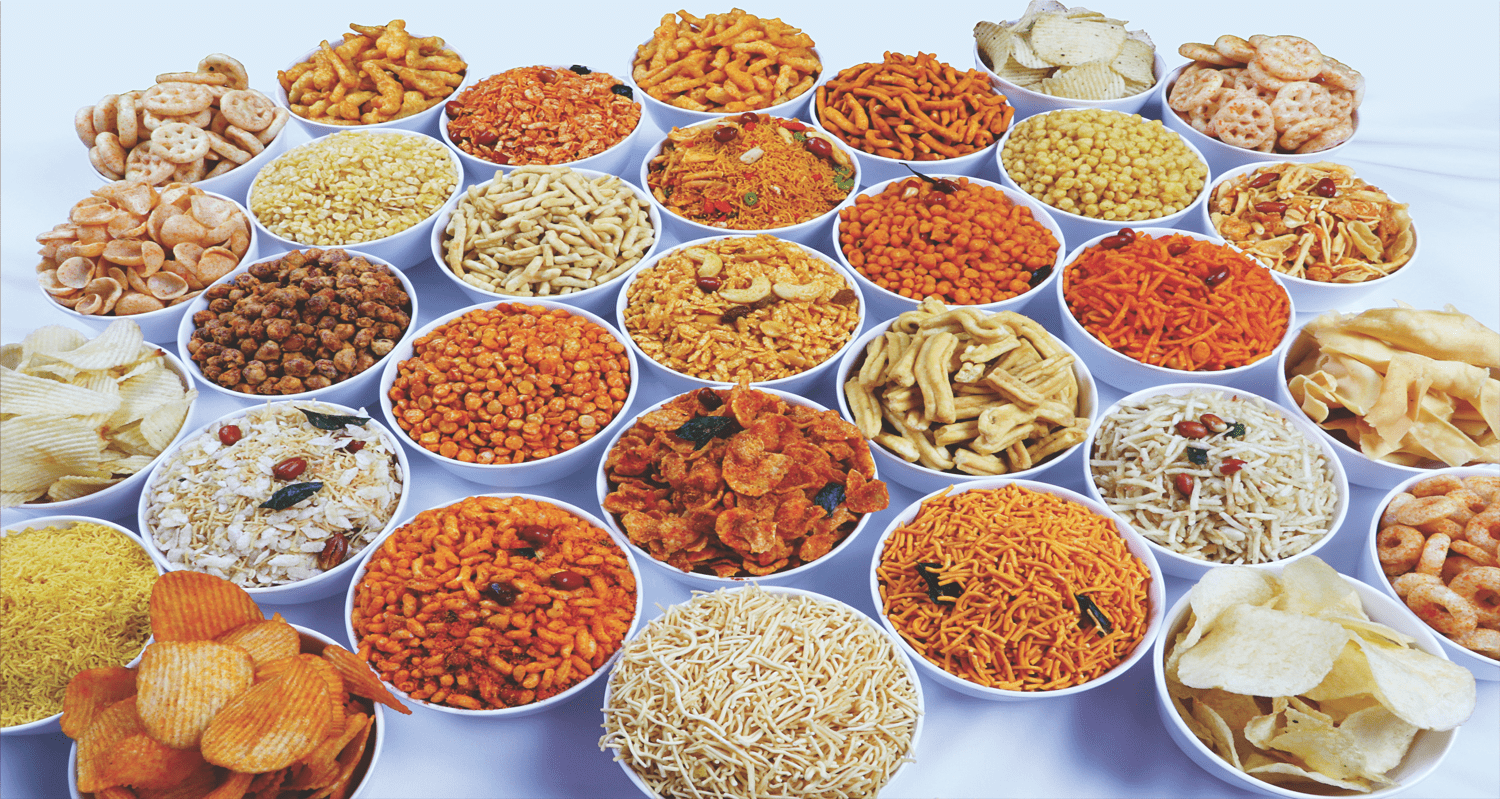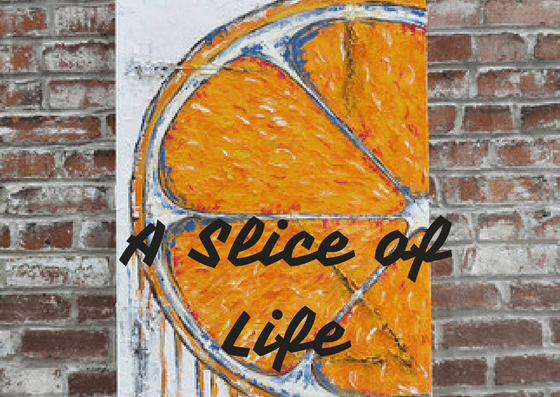Reading Time: 5 minutes
Ruchira tells us about various namkeens, from different parts of India, in the weekly column, exclusively for Different Truths.
Indians are probably the most notorious foodies in the world. They never miss an opportunity to pamper their taste buds. By and large Indians food items can be broadly classified into three, namely sweet, sour, and namkeen – a delightful combination of salt, chili, and spice all rolled into one, in varying proportions.
Bikaneri Bhujiya: A crisp snack, originally from Bikaner town in Rajasthan, is prepared by using gram flour and spices. Other ingredients include moth dal, salt, red chilli, black pepper, cardamom, cloves, groundnut oil, etc. The dough is formed into a long roll by pressing through a sieve and deep frying in vegetable oil. It is light yellow in colour. The foodie that I am, it is not unusual for me to polish off half a packet of Bhujiya with tea, any time of the day.
Batata Vada: Batata is Portuguese for Potato. This snack is popular in Mumbai and nearby areas where 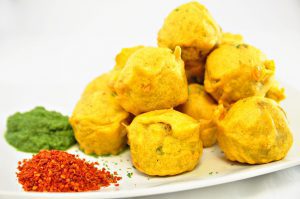

Banana Chips: Most commonly found and consumed in Kerala these are actually deep-fried and/or dried slices of bananas. If covered with sugar or honey they have a sweet taste. Alternatively, if they are fried in oil and sprinkled with spices they acquire a salty and/or spicy taste.
Bhajia: This spicy Indian snack, consists of a core food item e.g., soaked potato or fried onions with many spicy stuff added to it for giving it tastes of various types.
Bhunja: A highly popular and easy-to-make snack, it comprises specially roasted rice, mixtures of peanuts, various spiced pulses, beans), dried coconut pieces, spices, salt, and mustard, et al.
Dahi Vada/Bhalla: A must- have for dinner and lunch parties it is prepared by soaking vadas/bhallas in 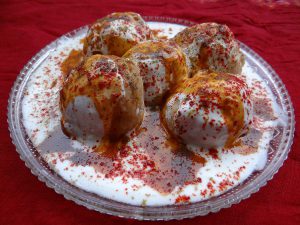

Samosa: A triangular fried or baked patty with a rich filling of spiced potato chunks, onions, peas, lentils, peanuts, cauliflower florets, etc. For non-vegetarians samosas may be prepared using a stuffing of minced mutton and chicken. Samosa happens to be my personal favourite. On a sunny afternoon, two or three samosas washed down by a hot cup of Darjeeling or Assam tea is sheer paradise!
Pakoda: A highly popular all-season snack makes ample use of vegetables like onion, eggplant, potato, spinach, plantain, cottage cheese, cauliflower, tomato, and so on. Pieces of these vegetables are dipped in a batter of gram flour (besan) and then deep-fried.
Poha: A native of Maharashtra-Gujarat region, it uses easily digestible, de-husked rice, flattened into flat light dry flakes. The flakes swell when added to the oil, water, and milk. The commonplace ingredients for making poha are onion, potato, raw peanuts, tomatoes, salt, sugar, and turmeric. Spices and garnishing include mustard; coriander leaves green chili and dash of hing (asafetida) whether hot or cold, as they absorb water, milk, or any other liquids. The thicknesses of these flakes are variable depending on its place of origin. On a personal note, I enjoy a platter of kanda poha for breakfast, from time to time
Chakli: A typically Maharashtrian snack with a crisp and crunchy taste contains rice flour and chili. Must be eaten while still hot
Dhokla: From the semi-arid western state of Gujarat comes light spongy square shaped pieces 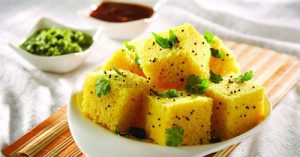

Khandvi: A landmark snack of Gujarat. It uses a good deal of gram flour and yogurt which is slowly cooked into a paste. The mixture is then spread out to cool, cut, then rolled and shaped into tiny scrolls. Available in many varieties: fresh/steamed or fried and dried. The last ones can be stored for a while.
Idli: It is a simple, easy-to-make cake that currently enjoys pan-Indian popularity. It is fast emerging as a healthy low-calorie breakfast item. The cakes vary from two to three inches in diameter and are made by steaming fermented black lentils and rice batter. The fermentation process breaks down the starches so that they can be easily digested. These must be accompanied with sambhar (lentils and veggies) and chutneys.
Dosa: This is basically a pancake made from rice batter and black lentils. Can be had plain or stuffed with 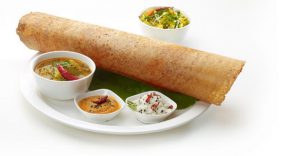

Kachori: Possibly the most popular snack that originated in the cow belt region of the country. A kachori in its simplest form is around a flattened ball made of flour. It is then stuffed with a baked mixture of yellow moong/urad dal, besan, black pepper, red chili powder, salt, and other spices.
Chhole Bhature: A highly popular dish possibly of Punjabi origin it is extremely rich in calories and contains a good deal of oil. The chholeis basically hot and spicy boiled chickpeas. The fluffy bhature is fried bread whose dough is treated with yeast. This is essential for the fluffiness. For heightening the taste further, bhatures may be stuffed with mashed potato or cottage cheese. Once this was a hot favourite too. But currently, my belly fat prevents me from indulging in them too much (sigh)
Kulcha Chana: Yet another common North Indian snack. The Chana is nothing but chickpea, soaked overnight, boiled, and then cooked in a gravy of onion, tomatoes, garlic, ginger, and garam masala. A kulcha is a yeast-leavened flatbread baked in coal-fired tandoor oven.
Murukku: This is a spicy crunchy snack made out of rice and urad dal flour. Its name may be ascribed to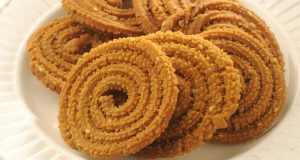

Bhelpuri: This interesting potpourri figures among famous street foods of Mumbai. Well, almost anything and everything can go into it e.g., puffed rice, chiwda (rice flakes) onion, tomato, cucumber, papdi flakes, spices, lemon juice and green chili pieces and above all tangy tamarind sauce. Ideally garnished with fresh coriander leaves.
Last but not the least, mention must be made of the Titan of Bengali, snacks, Jhaal Moori. Etymologically Jhaal is “hot chili” while mooriis crisp puffed rice. This potpourri is similar to the famous bhel of Mumbai. The mixture has puffed rice, spices, pieces of boiled potato, onion, cucumber, peanuts, and fresh coconut, all blended together with a dash of raw mustard oil. And the result is a mind-blowing tangy taste. The garnishing items include roasted cumin powder, rock salt, green or dried chilies and fresh coriander leaves.
Now that we have covered a wide range of namkeens, let me take your leave, wishing you Bon Apetit!
©Ruchira Adhikari Ghosh
Photos from the Internet
#TastyFoodOfIndia #Namkeens #RangeOfFoodInIndia #IndianSaltyFood #SliceOfLife #DifferentTruths

